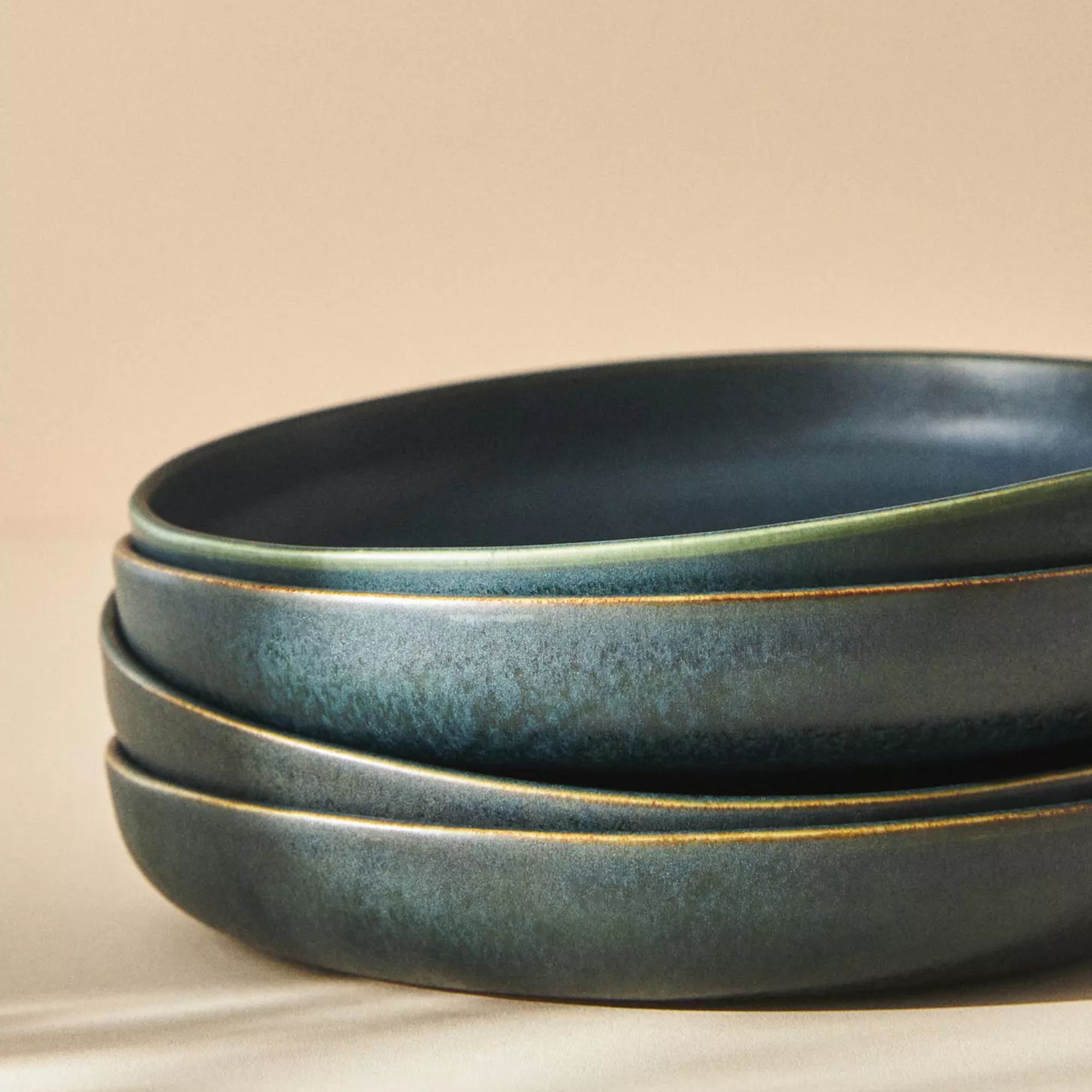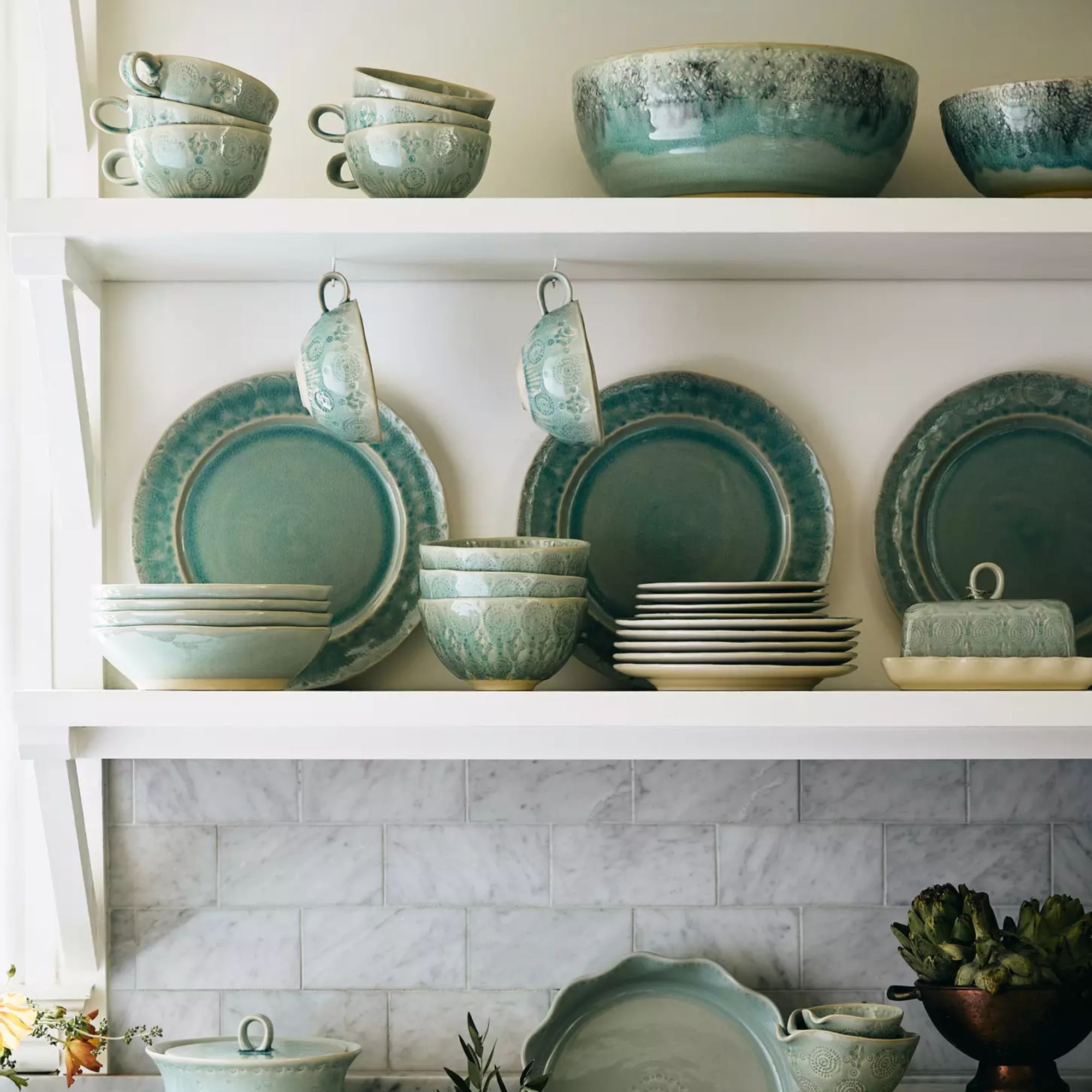How to set a table – an etiquette expert's tips for casual dinners and formal affairs
Impress your guests and learn the rules of setting a table for an elevated dining experience every time

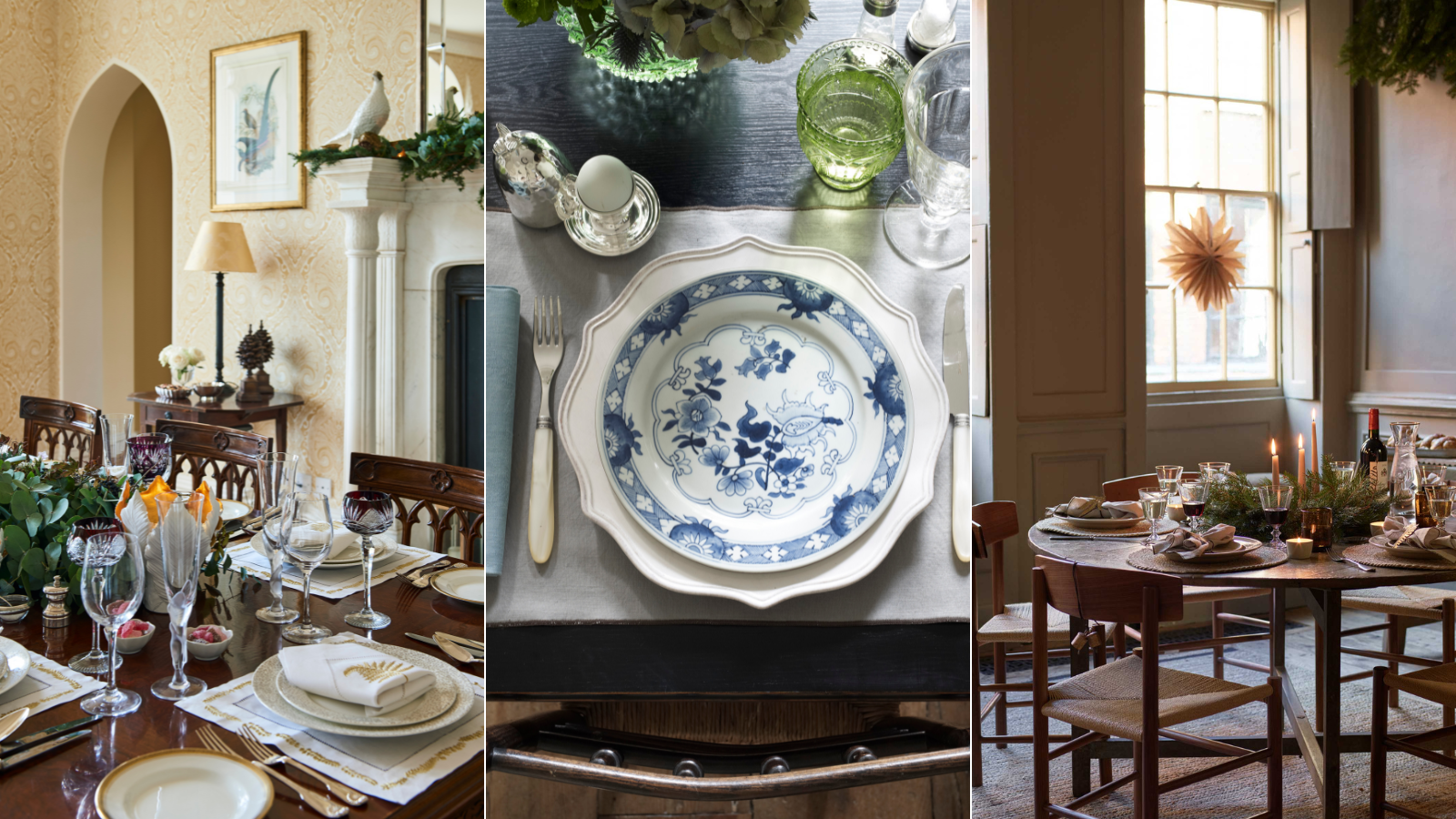
Want to look like a consummate professional at your next dinner party? Learn how to set a table for dinner for any occasion, and you'll immediately impress your guests – whether it's a casual midweek get-together or a refined dinner party.
Acquiring the skills to set a table properly will instantly elevate any social gathering and take the stress out of the prep process.
By setting the table, you also set the tone for the evening – and show your guests that they are important to you. What's more, setting a dining table beautifully can also enhance the allure of the food you are serving.
How to set a table for any occasion
Once you are confident in the process, your tablescaping can stretch beyond merely setting the table and into decorating a dining table, displaying china, glassware, dining table centerpieces, linen, and ceramics, too.
We turned to Mannersmith's Jodi RR Smith, etiquette expert and author, to find out.

Jodi RR Smith, president and owner of Mannersmith, is an etiquette consultant specializing in social and professional conduct. Working with individuals, corporations, and other organizations, Jodi educates in a way that is both instructional and entertaining, helping her clients increase their confidence levels and achieve success in today's world.
Jodi has been promoting better behaviors since 1986. She received her Bachelor's Degree in Psychology from the University of Rochester and her Master's Degree in Industrial and Labor Relations from Cornell University. Her extensive background in motivational psychology and human resources has served to reaffirm her belief that proper manners and etiquette are an essential part of functioning successfully in today's world.

General rules
'There are some overarching guidelines when setting a table, whether it is for a casual event or a formal affair,' says Jodi.
What are you serving up? 'First, the menu dictates what is placed at each setting (if you are not serving salad, there is no need to set a salad fork) and where glassware goes depends on the proceedings (if you are beginning with a toast, a champagne flute will be the glass furthest to the right).'
Design expertise in your inbox – from inspiring decorating ideas and beautiful celebrity homes to practical gardening advice and shopping round-ups.
Cutlery goes outside in: 'Next, utensils are set so that they can be used from the outside in, those furthest from the plate are used first and those closest to the plate are used last.'
Set for symmetry: 'Finally, the most pleasing tablescapes have perfect symmetry from one place setting to the next.' Another thing to remember is that the bottom of your utensils should be level with the main plate.
Below, you can follow Jodi's expert tips on how to set a table for a chic event or a simple enjoyable dinner.
For everyday dining

1. The table should be clean and level.
2. Put out placemats or a casual tablecloth.
3. The anchor of any setting, including an everyday one, is the main plate.
4. To the right is generally a knife – with the sharp edge facing in towards the plate.
4a. If soup is being served, a soup spoon is placed to the right of the knife.
4b. Occasionally a soup spoon is set, without a knife, if long pastas such as spaghetti or linguini are to be served as the fork is twisted on the spoon.
5. Above the knife and soup spoon are the drink glasses. For an everyday dinner this is likely to be a simple water glass.
6. The napkin is set either under the fork or to the left of the fork.
For a casual dinner
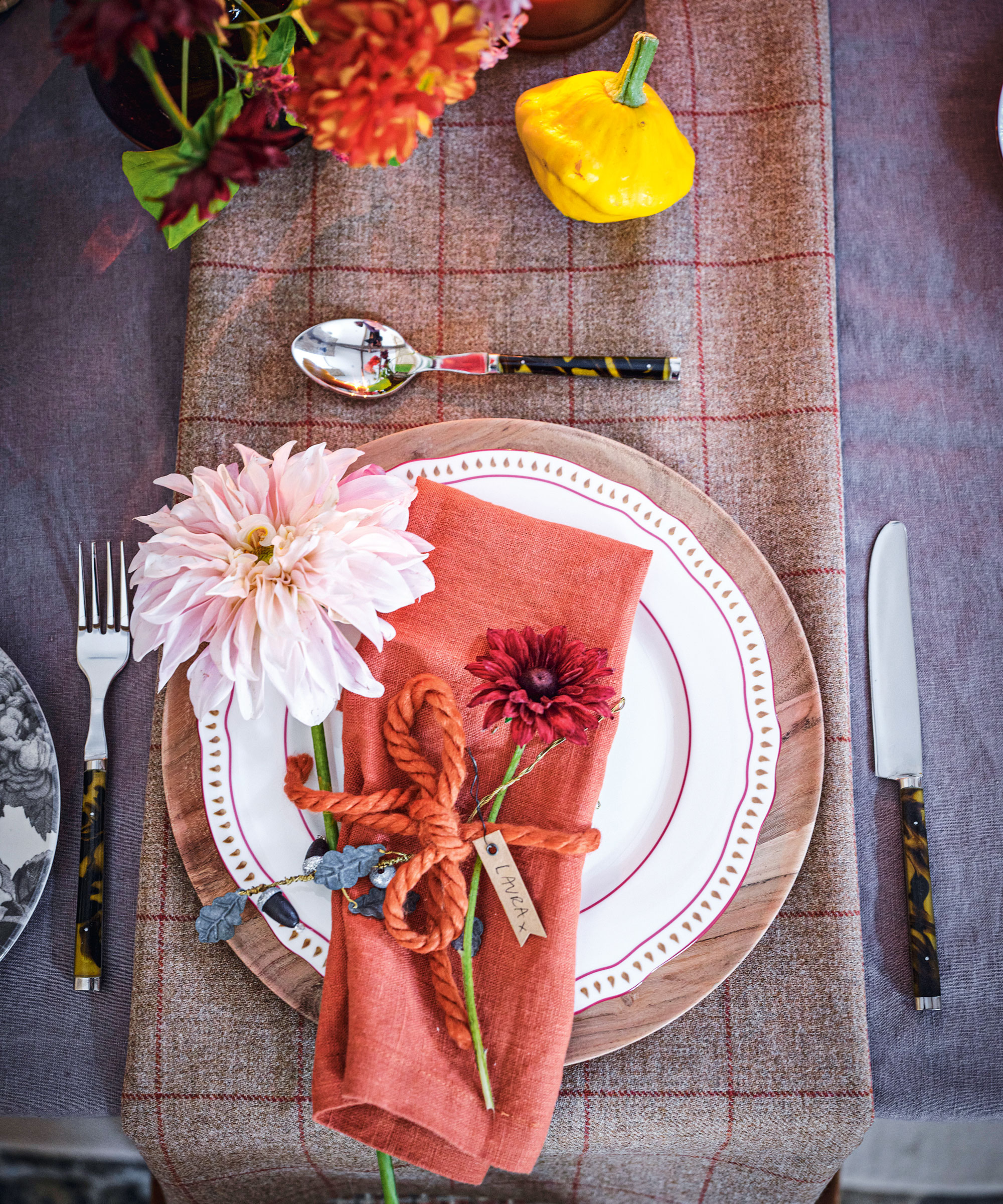
1. The table should be clean and level.
2. Placemats or a casual tablecloth may be used.
3. Put out the anchor of any setting: the main plate.
4. To the right is generally a knife – with the sharp edge facing in towards the plate.
4a. If soup is being served, a soup spoon is placed to the right of the knife.
4b. Occasionally a soup spoon is set, without a knife, if long pastas such as spaghetti or linguini are to be served as the fork is twisted on the spoon.
5. Above the knife and soupspoon are the drink glasses. When there are additional options in addition to water, for example wine glasses, usually the water glass is set furthest to the right. However, if a blessing or toast will launch the meal, that glass is set furthest to the right.
6. The entrée fork is set to the left of the main plate.
7. The napkin is set either under the fork or to the left of the fork.
For celebratory meals (casual weddings, elevated dinner parties)
1. The table should be clean and level.
2. A tablecloth may be used. Be sure the main fold of the tablecloth is 'tented' up and the hems around the edges are tucked under.
3. The anchor of any setting is the main plate.
4. To the right is generally a knife – with the sharp edge facing in towards the plate.
4a. If salad is being served, the salad knife is placed to the right of the entrée knife.
4b. If soup is being served, a soup spoon is placed to the right of the salad knife.
5. Above the knife and soup spoon are the drink glasses. When there are additional options in addition to water, including red and white wine glasses, usually the water glass is set furthest to the right. However, if a blessing or toast will launch the meal, that glass is set furthest to the right.
6. The entrée fork is set to the left of the main plate.
7. When a salad or appetizer will be served before the main course, that fork is set to the left of the entrée fork.
8. The napkin is set to the left of the fork.
9. If a bread plate is being used, it is set above the fork on the left side of the setting.
10. Butter knives are placed fully on the bread plate horizontally across the top, with the spreading edge facing towards the napkin.
11. If there is staff, the coffee cup and saucer, as well as the dessert utensils, can be set when the main meal is cleared. If the dessert items need to be set in advance, the coffee cup and saucer are placed to the right of the knives and soup spoon.
12. The dessert spoon is placed horizontally over the main plate with the bowl to the left and the handle to the right. The dessert fork is placed horizontally over the dessert spoon with the tines to the right and the handle to the left.
For a formal dinner
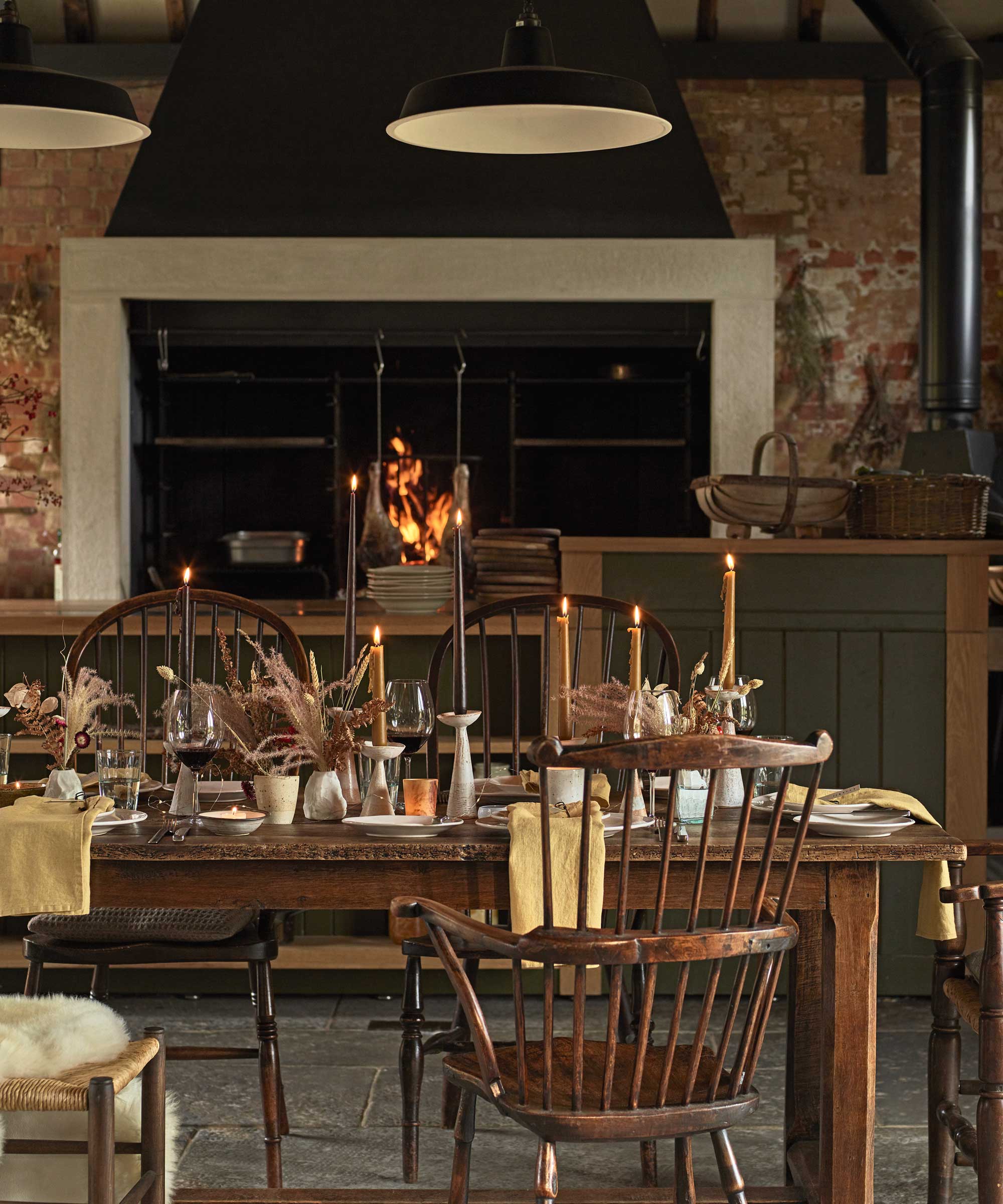
1. The table should be clean and level.
2. A tablecloth may be used. Be sure the main fold of the tablecloth is 'tented' up and the hems around the edges are tucked under.
3. The anchor of any setting is the main plate.
4. To the right is generally a knife – with the sharp edge facing in towards the plate.
4a. If salad is being served, the salad knife is placed to the right of the entrée knife.
4b. If soup is being served, a soup spoon is placed to the right of the salad knife.
5. Above the knife and soup spoon are the drink glasses. When there are additional options in addition to water, including red and white wine glasses, usually the water glass is set furthest to the right. However, if a blessing or toast will launch the meal, that glass is set furthest to the right.
6. The entrée fork is set to the left of the main plate.
7. When a salad or appetizer will be served before the main course, that fork is set to the left of the entrée fork. It is common for large formal events to have a pre-set salad (on a salad plate) placed on the main entrée plate. This allows for you (or your staff) to begin service with hot rolls and beverages when salad is its own course.
8. The napkin is set to the left of the fork or in a beautiful fold on the plate.
9. If a bread plate is being used, it is set above the fork on the left side of the setting.
10. Butter knives are placed fully on the bread plate horizontally across the top, with the spreading edge facing towards the napkin.
11. If there is staff, the coffee cup and saucer, as well as the dessert utensils, can be set when the main meal is cleared. If the dessert items need to be set in advance, the coffee cup and saucer are placed to the right of the knives and soup spoon. The dessert spoon is placed horizontally over the main plate with the bowl to the left and the handle to the right. The dessert fork is placed horizontally over the dessert spoon with the tines to the right and the handle to the left.
12. Place cards are a necessity at a formal event as they serve to reduce confusion and make your guests feel truly welcome. The place card should be set just above the dessert utensils if they are preset at the table.
13. Centerpieces are a wonderful way to enhance a tablescape, create ambience, and put your dining table styling skills on display. Be sure that any flowers and candles still allow for guests to peer across the table with an unobstructed view.
14. Salt and pepper should not be confused with the centerpiece. They should be set close enough so that your guests can reach them without needing to fully extend their arm. A set per guest is lovely, but not obligatory.
For a buffet
1. The table should be clean and level.
2. Placemats or a tablecloth may be used.
3. The plates should be set at the start of the buffet.
4. Utensils should be rolled into the napkin and set at the end of the buffet or set to the left of where the main plates will go at the table.
5. Water glasses are set to the right of where the main plates will go at the table.
FAQs
Where does the napkin go when setting a table?
The napkin is placed on the left of the place setting, either folded under the fork or in a napkin ring. It can also be placed centrally on the plate.
'Cloth napkins are lovely for both casual and formal events,' says Jodi. 'They may be set under forks for casual gatherings and to the left of the forks or in a beautiful fold on the plate for formal events.
'The napkin should never be placed in the glasses. This is a safety hazard should a guest attempt to remove the napkin with too much flourish.'
Where does the wine glass go on a table?
The wine glass goes on the top right of the plate. The water glass should be the glass closest to the plate, just above the knife, with the wine glass on its right.
It very much depends on the formality of the occasion, but it's useful to know that traditional etiquette suggests placing your napkin to the left of your plate when leaving the table, and placing it on your chair when briefly leaving the table to use the bathroom.

Ruth Doherty is an experienced digital writer and editor specializing in interiors, travel and lifestyle. With 20 years of writing for national sites under her belt, she’s worked for the likes of Livingetc.com, Standard, Ideal Home, Stylist and Marie Claire as well as Homes & Gardens.

